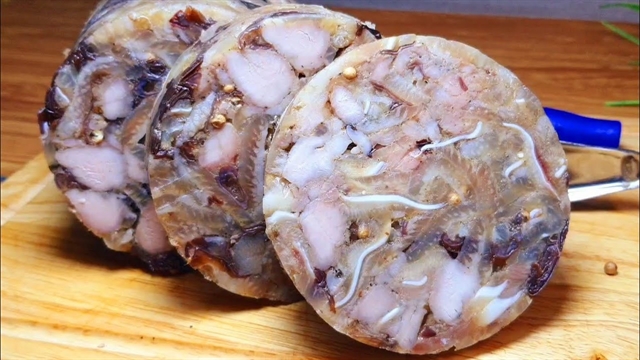With Tết beginning this week, Vietnamese families are preparing tasty trays of food including bánh chưng, giò xào and canh bóng to delight each other and celebrate the year ahead.
Thu Hà
Vietnamese living at home and abroad are busy preparing their favourite traditional dishes ahead of this week's Tết (Lunar New Year) festival.
“I still remember that when Tết was approaching, my mother, apart from other dishes, giò xào, a dish loved by all Vietnamese families,” said Dương Quang Nghị, Vietnamese citizen residing in the the US.
Nghị remembered when he lived in Hà Nội, his mother would wake up early in the morning a few days before Tết began and head to the market to pick up some kilograms of meat from a pig head, including nose, ear and tongue, she had ordered in advance.

Giò xào is a traditional Tết staple. Photo beecost.vn
He recalled that his mother would clean the assorted meat, before cutting them into thin slices, then soak them with fish sauce, pepper and broth mix for half an hour.
The dish's other ingredients included wood ear mushrooms, dried onion and garlic.
“My mother said that the most important part of making the dish is stir-frying it without burning it. The dish will be ruined if it's burnt,” Nghị said.

Giò xào is often served with bánh chưng and pickled onions. Photo lorca.vn
He added that the last stage of preparation is to wrap the cooked pork in phrynium or banana leaves into small round packets and tie them up with bamboo tapes.
Giò xào is best enjoyed when eaten with bánh chưng (sticky rice square cake) and pickled onions, Nghị said.
He said when his mother died, his father continued to cook giò xào but did not use phrynium or banana leaves to wrap them after cooking. Instead, he used a plastic mould cut from a 1.5 litre plastic bottle to hold the stir-fried hot meat in place.
However, said Nghi, “We generally agree that phrynium or banana leaves make the dish more tasty."
Like Nghị’s mother, many Hanoians serve pork rind soup (locally known as canh bóng) during Tết feasts.

A colourful tray of traditional Tết dishes. Photo trends.info.vn
Canh bóng is often cooked with vegetables, pork paste, dried shrimp, fragrant mushrooms and wood ears. Hanoians typically prepare the dish with chicken broth or pig bone broth, and cut the rinds into matchbox-sized pieces, deodorizing them with ginger and rice wine.
The rinds are then quickly stir-fried and added into bowls of soup as toppings.
While a traditional Tết staple, some younger cooks now say that canh bóng is too time-consuming to prepare.

Vietnamese families are preparing tasty pork rind soup for their Tết feasts. Photo souverydays.com
With Tết beginning this week, Vietnamese families are preparing tasty trays of food including bánh chưng, giò xào and canh bóng to delight each other and celebrate the year ahead. VNS